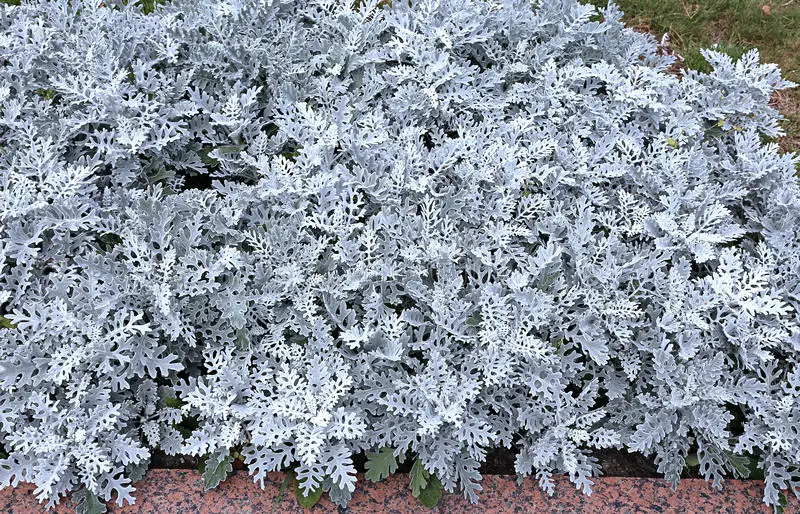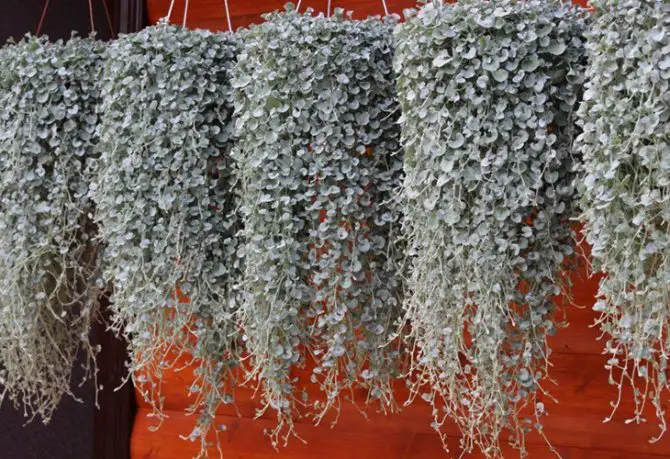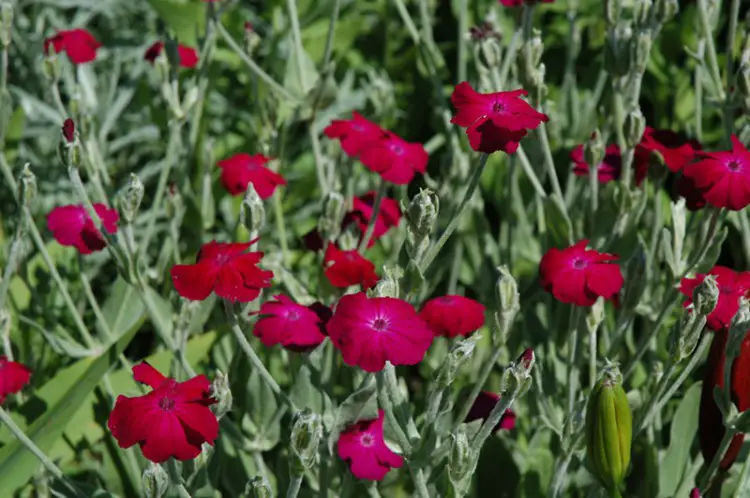One of the main methods of building a bright flower garden is the play of contrasts. To add color to the garden composition or to advantageously shade flowering species, you can add variegated forms of indoor plants or crops with unusual silvery foliage. here we are going to show you the best silver leaf indoor plant for houses and gardens of homes or farmhouses.

silver leaf indoor plant
Silver leaf indoor plants are interseting and beautiful. I propose to get acquainted with a selection of interesting species suitable for houses and home gardens or farms houses:
stachys
Despite its unusual appearance, this winter-hardy, unpretentious ground cover perennial has an excellent property to harmoniously fit into almost any flower garden. Suitable for rock gardens. At the beginning of the season, stachys forms a beautiful rug of highly pubescent leaves, and in the middle of summer, it produces long peduncles with small pink flowers.
It is better to plant this representative of the family of lamines in slightly shaded areas, on loose, not too acidic soil. Stakhis does not like sunshine and excessive watering. You can propagate the plant by dividing the bush.
Recommended for you best large indoor plants for beginners.
Dichondra silver

Dichondra silver, or creeping, is a ground cover perennial from the bindweed family. Most often, this species is grown in seedlings and in our country is used as an ampelous annual.
Veronica gray
A very unpretentious perennial plant with tomentose leaves and attractive, spike-shaped inflorescences with rich blue flowers. A frost-resistant species from the family of the norichnikovs.
Veronica gray is suitable for the decoration of rocky gardens due to the compactly arranged leaves.
Schmidt Wormwood

Schmidt Wormwood ‘Nana’ a dwarf variety popular in ornamental gardening with a dense compact shape and pronounced silvery leaf pubescence. This is a Far Eastern winter-hardy perennial from the Asteraceae family, about 20 cm high.
This low-growing variety of wormwood should be planted in a sunny location with relatively poor soil and ensure good drainage. The plant should not be diligently watered and fed, otherwise, it will lose its decorative qualities. During flowering, the bush begins to fall apart a little. The variety tolerates haircuts, winters well, and grows back in spring. The easiest way to propagate is by dividing the bush and stem cuttings.
Artemisia with silvery foliage (Schmidt, Pursch, Steller, Ludwig wormwood ) is best suited for rocky and gravel gardens, as well as curb plants.
Silver loch
Silver loch fast-growing winter-hardy shrub 1-4 m high native to the North American continent. It tolerates frosts down to -40 degrees, but in cold winters, branches can freeze slightly.
The shoots of the plant and the back of the leaves are covered with small silvery scales. The shrub is suitable for single and group ornamental plantings and is also used to anchor slopes, as it has a very strong superficial root system. Grows intensively.
Silver loch looks beautiful in contrast with Thunberg barberry and red-leaved vesicles.
Alpine edelweiss
Winter-hardy herbaceous perennial from the Compositae family, completely pubescent with light hairs, which is best suited for planting in rock gardens.
The plant prefers poor rocky soils with good drainage. It is better not to place a flower on fertile soil, otherwise, it loses its compact size and habitual pubescence.
Thick tansy
Herbaceous slow-growing perennial from the Asteraceae family with beautiful finely dissected feathery leaves of gray color with a silvery sheen.
The height of the bushes is 20 cm. Flowering is observed in the second half of summer, inflorescences with yellow inconspicuous flowers. The plant can be propagated by dividing an adult bush.
Low-growing species of tansy with silvery leaves ( Thick tansy, dense, sneezing-flowering) should be planted in a sunny place without excessive soil moisture. These plants are suitable for decorating rockeries and rock gardens.
silver gray fescue
An accent, unpretentious perennial plant from the family of cereals, which is suitable for creating mixed borders and rocky gardens. The bluish-silvery tough leaves of silver-gray fescue work well among low-growing conifers.
For planting, you should choose an open, sunny place and not too fertile land without stagnant water. Curtains retain their decorative appearance for 3-4 years, after which they should be divided.
Cineraria seaside
This decorative perennial with beautiful openwork leaves in our latitudes is grown in seedlings and used in flower beds as an annual. It belongs to the Asteraceae family and has yellow flowers in inconspicuous inflorescences.
The culture prefers fertile soil and does not tolerate the bay. In regions with a milder climate, cineraria can be preserved until spring and even see flowering if the plantings are mulched with peat in the fall.
Rose campion

In order for this beautiful biennial plant with gray pubescent leaves to bloom intensively and for a long time, it should be planted in a well-lit place with relatively poor soil. The flowers are white, bright pink, or crimson, depending on the variety. The height is about 40 cm. The
winter hardiness of this species from the carnation family is high, it tolerates winter without shelter. The plant is easy enough to grow from seeds, cuttings or propagate by dividing the bush.
Felt splinter
Another light-loving drought-resistant representative of the clove family and small grayish-green pubescent leaves. Felt chickweed quickly grows in favorable conditions, forming a continuous loose carpet up to 30 cm high. White flowers up to 1 cm in diameter.
This winter-hardy perennial is best planted in a sunny place or in a light partial shade on sandy loose permeable soil and rejuvenate the planting every few years. The plant can be trimmed to maintain a compact decorative appearance. Easily multiplies by dividing the bush.
For shingles, you can find a place in almost any well-lit flower garden without excessive soil dampness, as well as in a rocky garden.
Plants with silvery leaves bring variety to the palette of garden compositions, helping to make flowing accents. In addition to the types of foliage with ebb tides mentioned in the article, crops such as narrow-leaved helihrizum, silver cinquefoil, three-veined Anaphalis, stonecrop, alpine antennae are adorned. Noble colored in silver fern frond Athyrium nipponskoy and leaves lungwort hybrid ‘Majeste’.
In more southern climates, the attention of experienced gardeners may be attracted by unusual silver leaf indoor plant, such as prickly artichoke, silvery lavender, heather ‘Velvet fascination’, santolina silvery and graceful, giant erythematosus, etc.
All these amazing plants fit perfectly into the concept “White garden” and “Lunar garden” .
